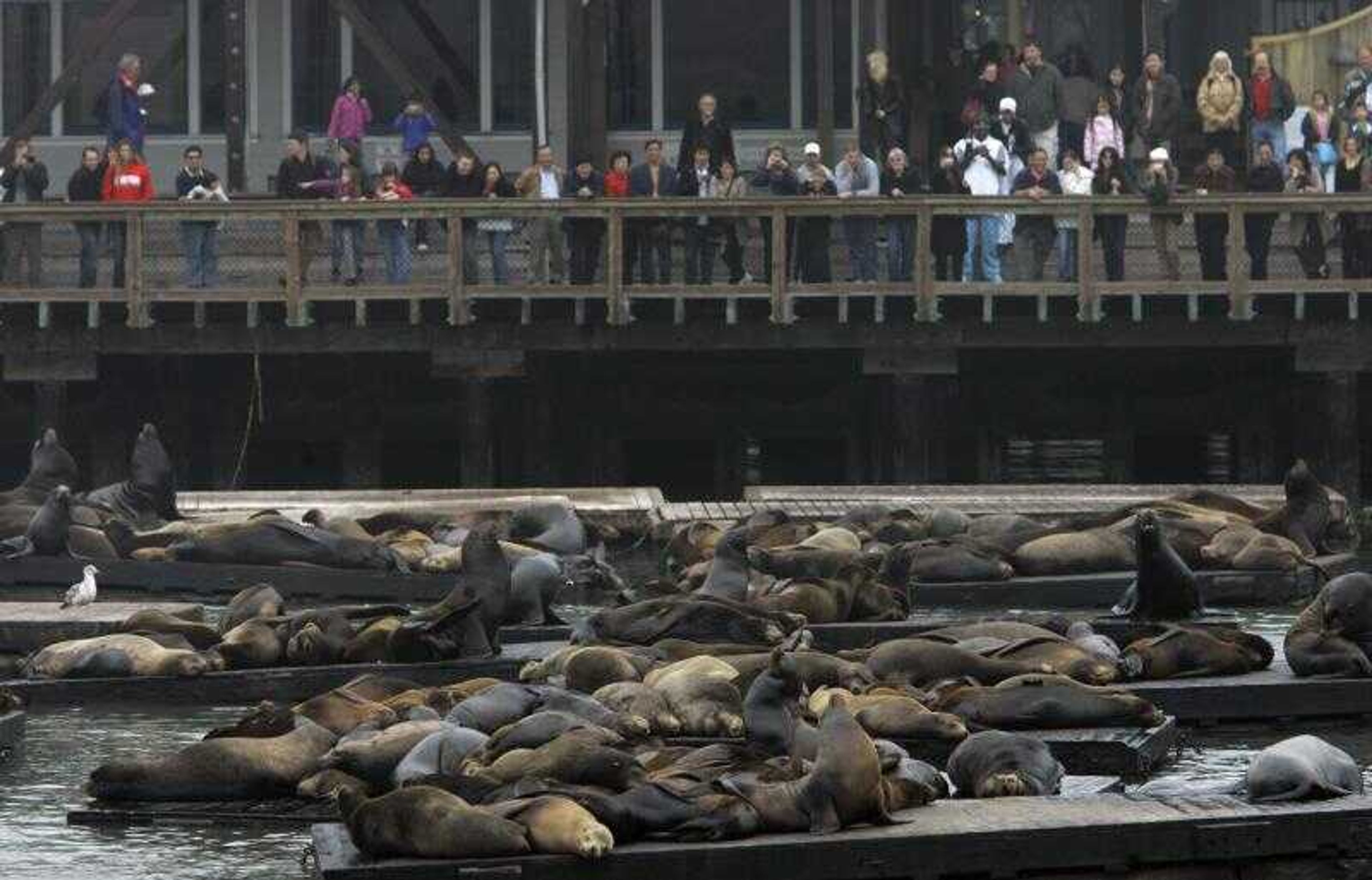Recent sea lion attacks in California challenge animal's cuddly image
SAN FRANCISCO -- Tourists flock to Fisherman's Wharf for the seafood and the stunning views of San Francisco Bay, but for many visitors, the real stars are the dozens of playful, whiskered sea lions that lounge by the water's edge, gulping down fish...
SAN FRANCISCO -- Tourists flock to Fisherman's Wharf for the seafood and the stunning views of San Francisco Bay, but for many visitors, the real stars are the dozens of playful, whiskered sea lions that lounge by the water's edge, gulping down fish.
Now a series of sea-lion attacks on people in recent months has led experts to warn that the animals are not as cute and cuddly as they appear.
"People should understand these animals are out there not to attack people or humans. But they're out there to survive for themselves," said Jim Oswald, a spokesman for the Marine Mammal Center across the Golden Gate Bridge from San Francisco.
In the most frightening of the recent episodes, a rogue sea lion bit 14 swimmers this month and chased 10 more out of the water at San Francisco's Aquatic Park, a sheltered lagoon near the bay. At least one victim suffered puncture wounds.
Some scientists speculate that the animals' aggressive behavior is being caused by eating fish contaminated by toxic algae, or by a shortage of food off the coast. But wildlife experts say even healthy sea lions are best left alone.
Other incidents
In Southern California in June, a sea lion charged several people on Manhattan Beach and bit a man before waddling into the water and swimming away. In Berkeley, a woman was hospitalized last spring after a sea lion took a chunk out of her leg.
Last year, a group of sea lions took over a Newport Beach marina and caused a vintage 50-foot yacht to capsize when they boarded it. And a lifeguard in Santa Barbara was bitten three times while swimming off El Capitan State Beach.
In Alaska, a huge sea lion jumped onto a fisherman's boat in 2004, knocked him overboard and pulled him underwater; he escaped without serious injury.
Sea lions, which can reach 1,000 pounds, typically bite only if they feel threatened or cornered. And they are more likely to flee than fight if they can escape. Researchers have described the most recent attacks, in which some swimmers were chased through open water, as abnormal behavior.
Still, with a population numbering about 200,000 and growing, these playful, social creatures are increasingly likely to cross paths with humans.
Sea lions accustomed to the easy pickings of seafood scraps in popular fishing areas can become aggressive toward people if they fear their food is about to be taken away, Oswald said.
The Berkeley attack, for example, was at a marina where fishermen dock their boats and feed fish scraps to sea lions. After they ran out of scraps, the sea lion turned aggressive and bit a crew member.
At the same time, a food shortage off the Southern California coast could be driving more hungry sea lions than usual to San Francisco Bay, said Lynn Cullivan, a spokesman for San Francisco Maritime National Historical Park.
Humans could also be contributing to aggression in sea lions in another way: Toxic algae blooms fed by agricultural runoff and other pollution can lead to the poisoning of marine mammals by a chemical called domoic acid, which can cause brain damage. The Marine Mammal Center treated more than 200 sea lions for domoic acid poisoning last year.
Veterinarians at the center believe the brain damage caused by the poison could have led to the marauding animal's erratic behavior in Aquatic Park, Oswald said, though they cannot be sure without actually examining the sea lion.
So far park rangers have not been able to track the attacker down. Nevertheless, the lagoon where the attacks occurred has been reopened to swimmers, though with new signs warning people to stay away from sea lions.
"People who swim with the lions -- though I'm sure that's nice -- it's probably not the best thing to do," Oswald said. "It's a wild animal. And you want to keep them wild."
Connect with the Southeast Missourian Newsroom:
For corrections to this story or other insights for the editor, click here. To submit a letter to the editor, click here. To learn about the Southeast Missourian’s AI Policy, click here.









